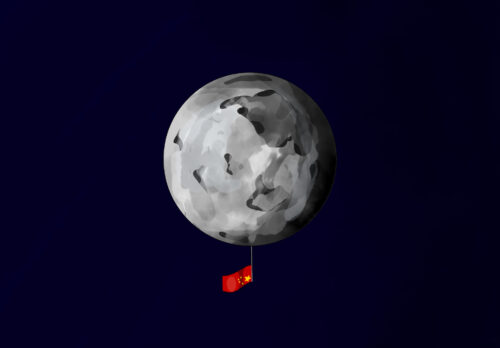China’s Mars rover landing closes another major gap with U.S. space program
The successful landing of the Zhurong rover on the Red Planet marks a major milestone in the China National Space Administration’s efforts to catch up to NASA.

China’s space program marked another major milestone over the weekend: the successful landing of a rover on Mars, a mission far more difficult than a lunar landing.
- The Zhurong (祝融 zhùróng) rover, named after a traditional Chinese fire god, touched down on May 15 on the Martian surface, and after a 17-minute time delay, successfully sent signals back to ground control 320 million kilometers away, Xinhua reports.
- For several more days, Zhurong will conduct diagnostic tests, before rolling down from its lander and embarking on a 90-day mission to “explore and analyze the local area, climate, magnetic field and subsurface,” per SpaceNews.
- The lander’s Tianwen-1 (天问一号 tiānwèn yīhào) orbiter is currently changing its trajectory around Mars to enable Zhurong to send back high-resolution photos of the Utopia Planitia region of the planet’s surface soon.
- NASA chief Thomas Zurbuchen tweeted his congratulations to the China National Space Administration for its successful landing.
Only the United States has previously operated robots on the surface of the Red Planet. Though the Soviet Union did put a probe on Mars in 1971, it lost communication 110 seconds after landing.
- Similarly, until December last year when China completed a lunar sample retrieval mission, only the U.S. and the Soviet Union had successfully brought Moon rocks back to Earth.
- Other major milestones for China’s space program have been coming quickly in the last year, including the final satellite launch for BeiDou, China’s GPS competitor, and the first of 11 launches to build a Chinese Space Station.
More on Zhurong, and on other Chinese space missions:
- China lands on Mars in crowning moment for space program / WSJ (paywall)
“‘The mission is very ambitious,’ Roberto Orosei, a scientist at the Institute for Radioastronomy in Bologna, Italy, said before the landing. ‘They plan to do, in one go, three steps NASA took several decades to achieve: getting into orbit, landing on the surface and then driving a rover around.’” - China’s Yutu 2 rover about to ‘wake up’ on the far side of the moon / Live Science
- Tianzhou-2 to send 2nd part of China’s space station into orbit / Global Times
- China’s space program is taking off / The China Project






